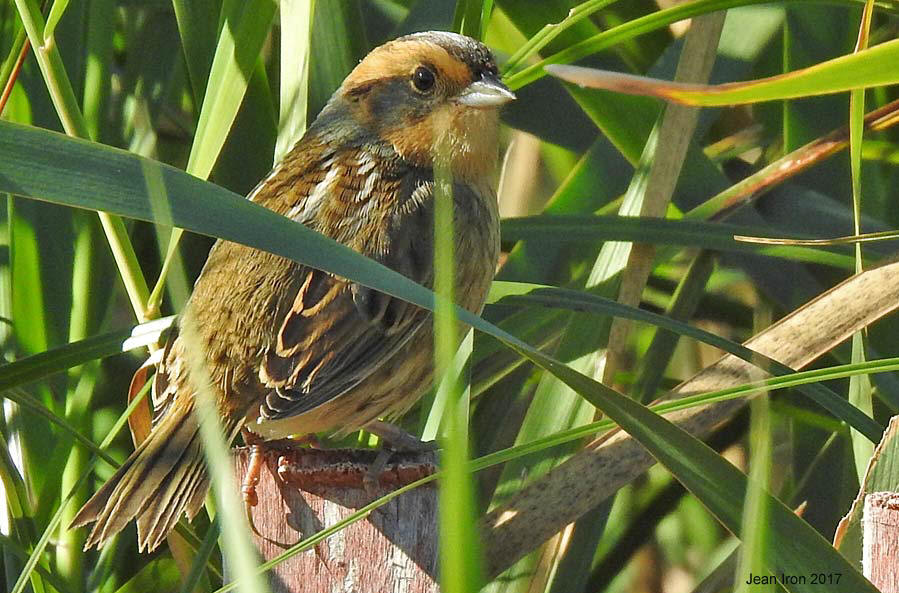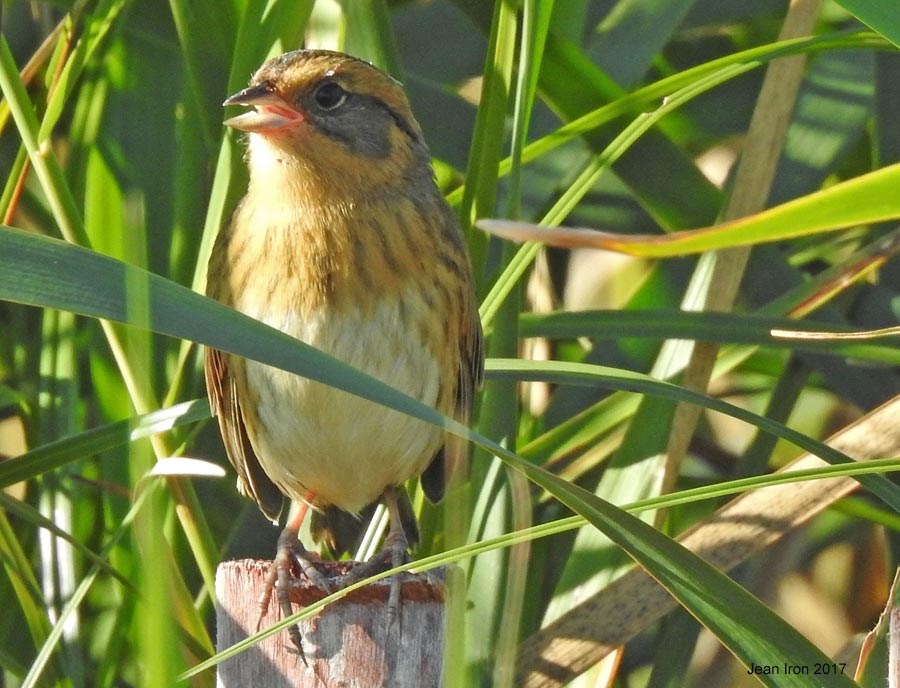|
Nelson's Sparrow in Tommy Thompson Park, Toronto |
|
 |
|
This Nelson's Sparrow popped up before
me in Tommy Thompson Park, Toronto on 1 October 2017. Nelson's
Sparrows are rarely-seen but regular migrants in southern Ontario.
To see a Nelson's Sparrow in southern Ontario, one must know their
peak migration time and search their preferred habitat. They are
sometimes seen in spring, but fall is the best time to find them.
Peak migration is late September to mid-October. They often arrive
and depart with strong cold fronts. Most birds seen in southern
Ontario are probably from the James Bay population Ammodramus
nelsoni alter. See more about subspecies under last photo. |
|
|
|
High counts of Nelson's Sparrows:
10 Nelson's Sparrows were seen in Hamilton on 30 September 2017 and
reported on eBird. The apparent record for southern Ontario is held
by Alan Wormington who saw 16 Nelson's Sparrows at Hillman Marsh
near Point Pelee on 8 October 1995. This is probably the highest
number seen on any one day in Ontario away from James Bay. |
|
|
|
NELSON'S SPARROW VIDEO at Tommy Thompson
Park |
|
 |
|
Former name for Nelson's Sparrow was
Nelson's Sharp-tailed Sparrow. Photo shows the long pointed tail
feathers. Tommy Thompson Park, 1 Oct 2017 |
|
|
|
Timing: Best time of day is the
first hour after sunrise. In October, the vegetation is often
soaking wet from condensation and the birds will tend to sit up
rather than get wet. |
|
|
|
Habitat: Migrant Nelson's in
southern Ontario usually inhabit marshes bordering large lakes and
rivers. Best not to look for them in deep water marshes or thick
stands of tall cattails. Instead, concentrate your search in the
zone of grasses and sedges where the vegetation varies from knee to
waist high (sometimes taller) and where the ground is moist to
slightly wet. Nelson's are sometimes found on drier sites where lake
levels have receded. Plant communities to search include: Scirpus
and Carex (sedges), Spartina (Cord Grass), Phalaris
(Canary Grass), Glyceria (Manna Grass) and other similar
grasses and sedges, sometimes with a mixture of Typha
(Cattail), Bidens (Beggar's Ticks) or Polygonum
(Smartweed), and low bushes. |
|
|
|
Interestingly Nelson's Sparrows
and Yellow Rails often share the same habitat. LeConte's Sparrows
prefer drier habitats. |
|
 |
|
Subspecies: Nelson's Sparrow
comprises three subspecies. Most birds seen in southern Ontario are
the James Bay subspecies Ammodramus nelsoni alter. The
Prairie subspecies nelsoni is more frequent in extreme
southwestern Ontario. Migrants of these two subspecies are very
difficult to separate in the field. Fall migrants in winter plumage
are more heavily streaked below than spring birds in breeding
plumage. The Acadian subspecies subvirgatus has not been
recorded in Ontario, but should be looked for in eastern Ontario
because it occurs in summer near Montreal. |
|
|
| |
|
|